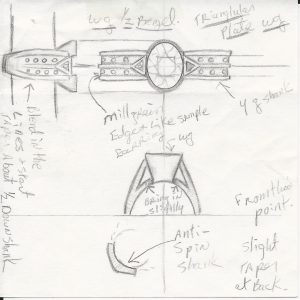I have been to many events lately where there has been little to no attempt to make the venue look nice. This leads to another problem. When the event is over, everyone just packs up and leaves. Trash is strewn everywhere, chairs and tables are left out, floors dirty, and trash cans left overflowing.
-
-
As an artisan, when asked to create a proposal for regalia, I normally have a conversation similar to the following.
-
When I was in college taking an "Economics 101" class, I remember having this one point hammered over and over again: "The law of supply and demand states that a low supply and high demand for any product or service will typically increase its price". That brings me to the title of this post. "Buying Scarcity". After some basic info, I will tie it into the jewelry trade.
-
Now I have nothing against selling jewelry. I did it for many years. I just do not want to mislead others into thinking that they cannot adequately clean their own jewelry, and I do not like using gimmicks to get you back into a store to sell you something.
-
This old vaudeville joke about Carnegie Hall, which opened in 1891, has been around so long, that no one knows who first said it. Made famous by Jack Benny (1894-1974), the vaudeville, radio and television comedian, it is probably the most quoted guidance on the importance of practice in order to learn a skill. This quote is about music and musicians, not jewelry, but it has become the default advice on how to learn just about anything. Unfortunately, it is probably the worst advice you can give someone to help them master any skill.
-
I have no “artistic ability“. But I do not care about that. I have plenty of “creative ability”. I would prefer to have both.
-
Deconstruction is a process to understand how something was created. Mostly used in writing, it is also used in art.It is looking at the “components” to see how they make the “whole”, whether that is a piece of writing, a building, a favorite chair, a ring… Deconstruction looks at the smaller parts that were used to create an object. This gives insight into the mind of the person who created it. In some ways, it lets their thoughts and ideas continue to live centuries after they have passed. The smaller parts are usually ideas.
